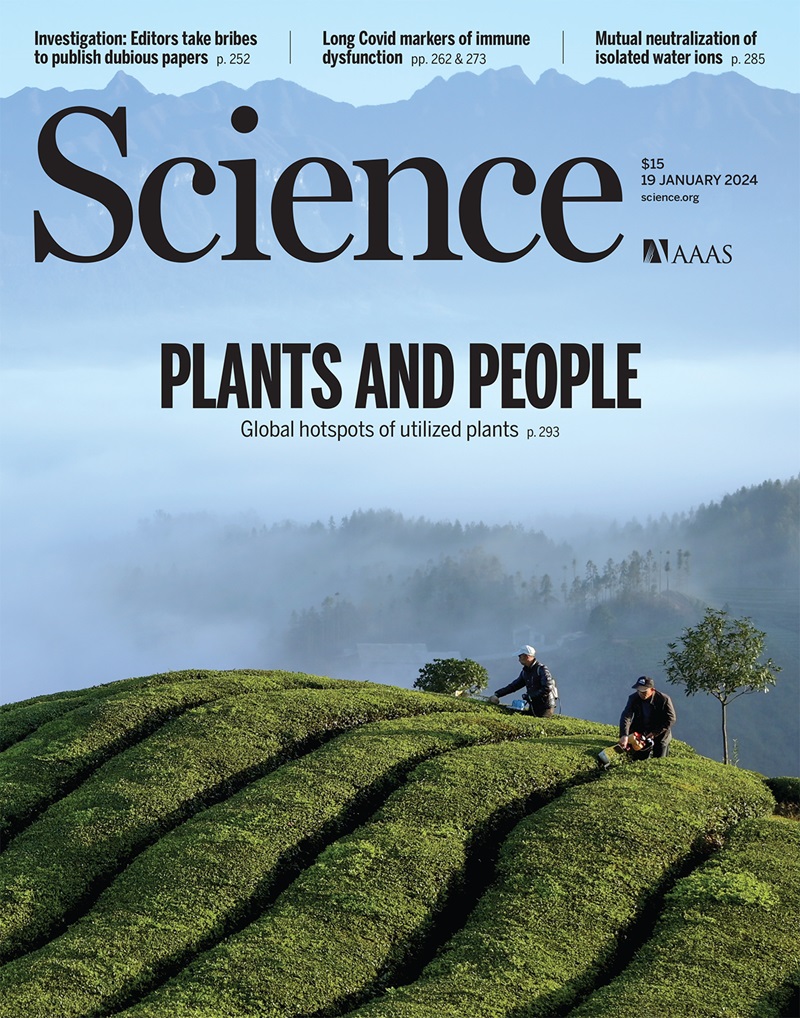在无序二维维格纳固体中成像量子熔化
IF 44.7
1区 综合性期刊
Q1 MULTIDISCIPLINARY SCIENCES
Science
Pub Date : 2025-05-15
引用次数: 0
摘要
二维强相互作用的电子在低密度下结晶成固体相,称为维格纳晶体,在高密度下形成费米液体。在中等密度下,二维固体在临界密度附近演变成强相关液相。我们使用无创扫描隧道显微镜成像技术观察了无序Wigner固体在双层二硒化钼(MoSe2)中的量子熔化。在低密度下,维格纳固体形成由局部无序固定的纳米晶畴。随着固相密度的增加,其表现出量子致密化行为。在阈值密度以上,维格纳固体局部熔化,进入固体和液体共存的混合相。液体区域在更高的密度下扩大并形成一个渗透网络。本文章由计算机程序翻译,如有差异,请以英文原文为准。
Imaging quantum melting in a disordered 2D Wigner solid
Two-dimensional strongly interacting electrons crystalize into a solid phase known as the Wigner crystal at low densities and form a Fermi liquid at high densities. At intermediate densities, the two-dimensional solid evolves into a strongly correlated liquid phase around a critical density. We observed this quantum melting of a disordered Wigner solid in bilayer molybdenum diselenide (MoSe2) using a noninvasive scanning tunneling microscopy imaging technique. At low densities, the Wigner solid forms nanocrystalline domains pinned by local disorder. It exhibits a quantum densification behavior with increased densities in the solid phase. Above a threshold density, the Wigner solid melts locally and enters a mixed phase in which solid and liquid regions coexist. The liquid regions expand and form a percolation network at even higher densities.
求助全文
通过发布文献求助,成功后即可免费获取论文全文。
去求助
来源期刊

Science
综合性期刊-综合性期刊
CiteScore
61.10
自引率
0.90%
发文量
0
审稿时长
2.1 months
期刊介绍:
Science is a leading outlet for scientific news, commentary, and cutting-edge research. Through its print and online incarnations, Science reaches an estimated worldwide readership of more than one million. Science’s authorship is global too, and its articles consistently rank among the world's most cited research.
Science serves as a forum for discussion of important issues related to the advancement of science by publishing material on which a consensus has been reached as well as including the presentation of minority or conflicting points of view. Accordingly, all articles published in Science—including editorials, news and comment, and book reviews—are signed and reflect the individual views of the authors and not official points of view adopted by AAAS or the institutions with which the authors are affiliated.
Science seeks to publish those papers that are most influential in their fields or across fields and that will significantly advance scientific understanding. Selected papers should present novel and broadly important data, syntheses, or concepts. They should merit recognition by the wider scientific community and general public provided by publication in Science, beyond that provided by specialty journals. Science welcomes submissions from all fields of science and from any source. The editors are committed to the prompt evaluation and publication of submitted papers while upholding high standards that support reproducibility of published research. Science is published weekly; selected papers are published online ahead of print.
 求助内容:
求助内容: 应助结果提醒方式:
应助结果提醒方式:


